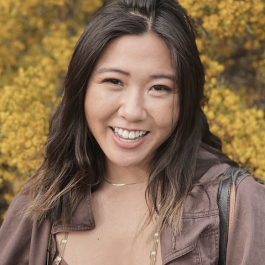No one could fault Canva if the company decided to stop experimenting or taking risks. After all, experimentation is something early-stage companies do when they’re trying to find product-market fit. The design company long ago cleared that hurdle, announcing in October of 2022 that it had reached more than 100 million monthly users across 190 different countries. In addition, it becomes less safe to take risks once a company has investors they’re accountable to, and Canva has a few of those, having raised more than $572 million in funding according to Crunchbase data.
While expectations are incredibly high for Canva, the company doesn’t see experimentation and risk-taking in terms of what it could lose but rather what it could gain and learn. Catie Takimoto is proof of this. Takimoto is a creative lead at Canva and said the company encourages leaders like her to help team members set quarterly goals that challenge them to learn new skills. Takimoto’s team was also given the freedom to experiment with its position in the organization — and the company didn’t flinch when its re-org started off rocky.
Built In San Francisco spoke to Takimoto to learn more about Canva’s culture of experimentation and the tangible impact it has had on her and her team.
Canva’s browser-based design tool enables users to create custom presentations, videos, social media images and more.
How do you signal to your team members that it’s OK to take risks, experiment with their craft — and be OK with potential failure in the process?
At Canva, we believe in taking risks and empowering our team to tackle big goals and solve problems that have never been solved before. Each quarter, I work with my “coachees” — Canva’s term for direct reports — to set ambitious goals that challenge them, foster career growth and contribute to Canva’s huge goals. Our team leads create a safe and inclusive environment with guardrails for experimenting and developing new skills, whether it’s honing public speaking abilities or crafting a new employee onboarding process.
Although failure can have a negative connotation, I see it as a normal part of the iterative process. When things don’t go as planned, we learn as much or sometimes more than when they do. As we like to say, we’re building a rocket ship as we fly it! While things may not always be perfect, we persist and iterate. A year ago we were a small, scrappy team of 10, but today we have structured design squads supporting all of our sales markets. Each “failure” offers new insights and knowledge, strengthening our team and driving us forward.
Our team has seen significant change as a result of promoting a culture of innovation.”
Tell us about a time when you or a team member took a risk with their work and it didn’t work out.
Last year, we branched off from a larger design team and established our own creative team under a new department. While we were navigating this new territory, we made the call to simplify our design offerings to ensure a quick delivery aligned with our sales strategy while maintaining high-quality creative work from our small team. Unfortunately, this decision proved to be a challenge to implement. We quickly learned from our sales partners that it can take weeks and sometimes months to establish customer relationships, making the change difficult to roll out quickly. Although the outcome was not what we anticipated, we learned valuable lessons from the experience.
We took the feedback to heart and engaged in a thoughtful discussion with key stakeholders to find a better solution. We developed a suite of design offerings that aligned with our team infrastructure, supported our sales team and, most importantly, made our Canva customers happy. This iterative process resulted in success and allowed us to also grow our team to where it is today.
How does encouraging team members to be experimental with their craft allow them to learn, grow and develop in the process?
Our team works on several creative projects for many different customers in any given week. Although there are certain steps within a project lifecycle, design leads have the autonomy to take calculated risks so long as they meet necessary milestones. This freedom allows them to enhance creative processes, adapt communications to each unique customer or experiment with new workflows. Once a project ends, we conduct retro sessions that distill the learnings from the experiments. We then share these insights with the entire team, allowing everyone to learn, grow and improve.
Our team has seen significant change as a result of promoting a culture of innovation. It’s been as small as simplifying technical design jargon for non-designers, and at other times it has created more substantial changes. We’ve implemented new steps in our design process, such as creating an art direction deck for large-scale projects, incorporating a design kickoff to ensure creative cohesiveness early on and building a mood board Canva template to foster creativity at the start of a project.






